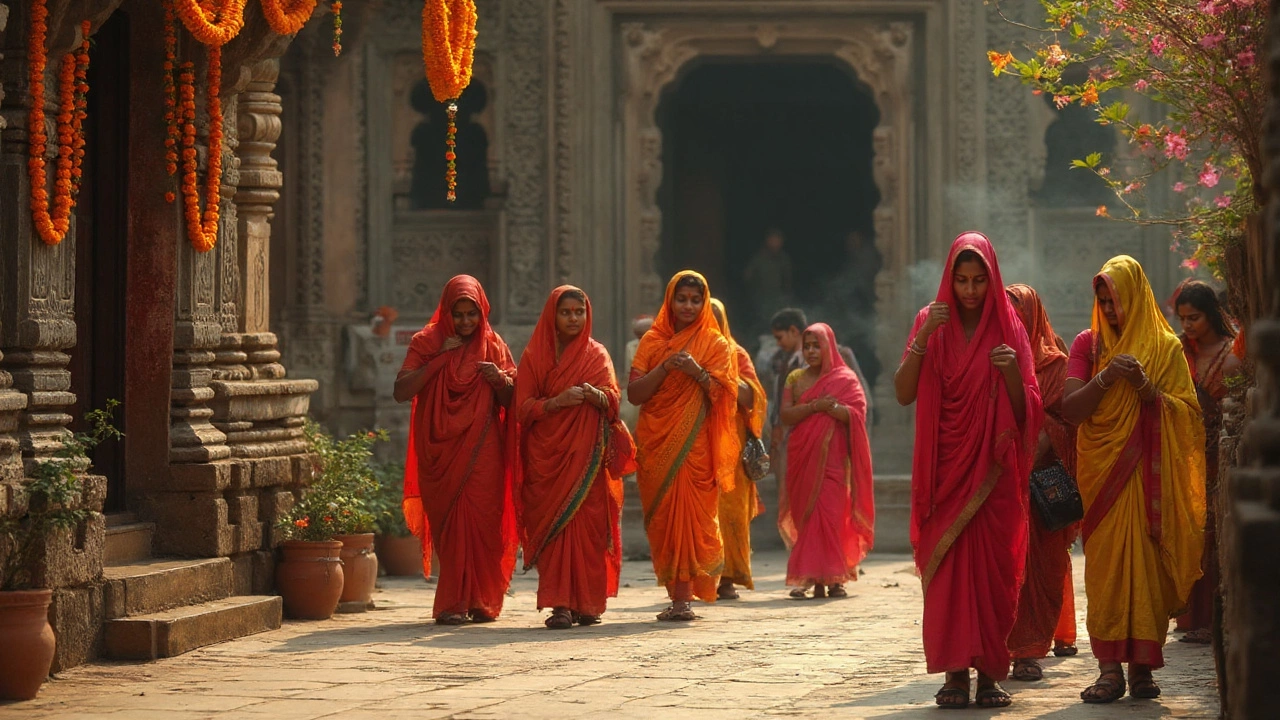What to Wear in Temple: Simple Rules for Dressing Respectfully in Indian Temples
When you visit a temple, a sacred space in India where millions worship, meditate, and connect with the divine, how you dress matters more than you think. It’s not just about rules—it’s about respect. In India, temples aren’t just buildings; they’re living centers of faith, and what you wear sends a message before you even step inside. Many visitors don’t realize that covering shoulders and knees isn’t optional in most places—it’s expected. Even in popular temples like Tirupati or Varanasi, people are turned away for wearing shorts, tank tops, or revealing clothes. The temple dress code, a set of unwritten but widely followed guidelines for modest attire in Hindu, Jain, and Sikh places of worship exists to keep the space sacred and calm for everyone praying.
There’s no single rule for every temple, but the core idea is simple: cover up. For women, that means long skirts or pants, and tops with sleeves. A dupatta or scarf is a lifesaver—it doubles as a head covering when needed, especially in South Indian temples where women are often asked to cover their heads. Men should avoid shorts and sleeveless shirts. Sandals are fine, but shoes are never allowed inside. Many temples offer free cloth rentals at the entrance if you show up unprepared. You’ll see locals in simple cotton sarees or dhotis—comfortable, breathable, and respectful. You don’t need fancy clothes. In fact, the more plain and modest, the better. This isn’t about fashion. It’s about blending in and honoring the space. In places like the Golden Temple in Amritsar, everyone covers their head with a cloth, no matter their religion. That’s not a suggestion—it’s part of the experience.
Some temples have stricter rules than others. In Kerala, women are often required to wear traditional sarees. In Tamil Nadu, even men might be asked to remove shirts before entering inner sanctums. In contrast, temples in big cities like Delhi or Mumbai might be more relaxed—but never assume. When in doubt, follow the crowd. If everyone’s covered, you should be too. Also, avoid wearing leather belts, wallets, or shoes made of animal skin near temple grounds—many Hindus consider them impure. Even jewelry can be an issue in some places; large rings or necklaces might be asked to be left at the storage counter. The temple visiting tips, practical advice for travelers to navigate cultural and religious expectations at Indian places of worship aren’t about restriction—they’re about connection. Dressing right helps you feel the quiet reverence others do. It opens the door to a deeper experience, not just a photo op.
What you wear in temple isn’t just about avoiding trouble—it’s about showing you understand the weight of the place. You’re not just a tourist passing through. You’re stepping into someone’s sacred world. When you dress simply and respectfully, you’re not just following rules—you’re joining a tradition that’s lasted thousands of years. And that’s something worth remembering. Below, you’ll find real stories and advice from travelers who’ve been there, done that, and learned the hard way what works—and what doesn’t—when visiting India’s most powerful spiritual sites.
Temple Dress Code for Girls: What to Wear and What to Avoid in Indian Temples
Curious about what girls should wear in Indian temples? Dive into this detailed guide on temple dress codes, modest outfits, useful tips, and cultural etiquette.
Read more